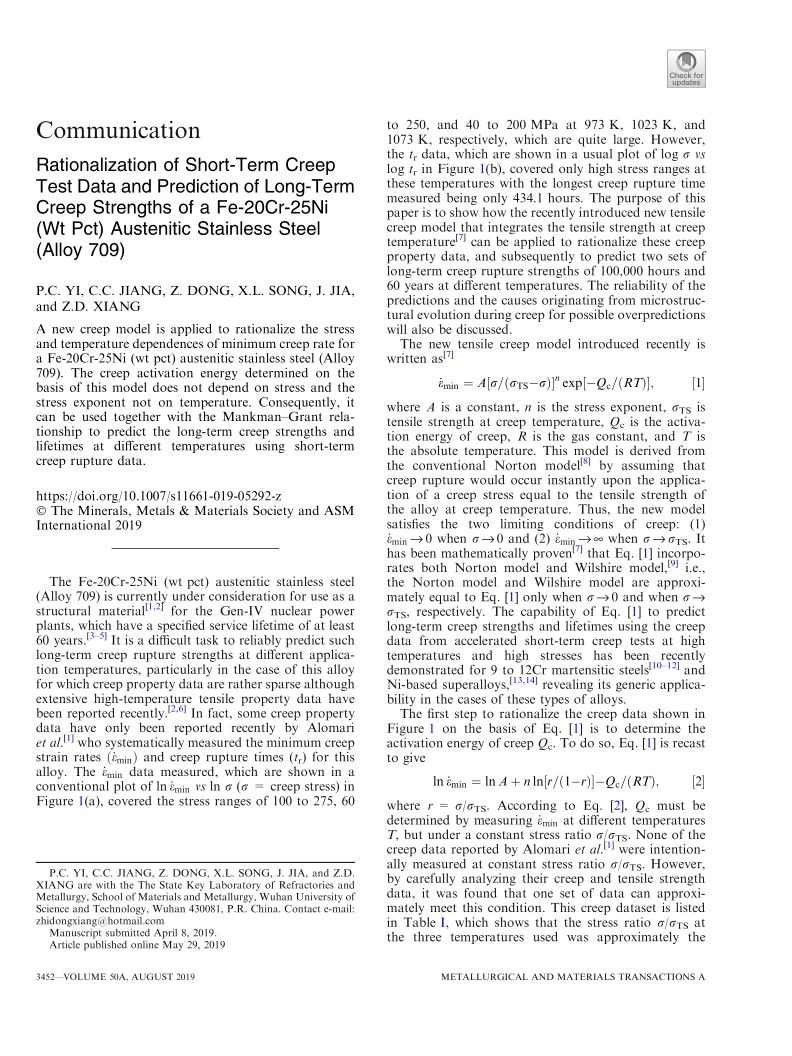A new creep model is applied to rationalize the stress and temperature dependences of minimum creep rate for a Fe-20Cr-25Ni (wt pct) austenitic stainless steel (Alloy 709). The creep activation energy determined on the basis of this model does not depend on stress and the stress exponent not on temperature. Consequently, it can be used together with the Mankman–Grant relationship to predict the long-term creep strengths and lifetimes at different temperatures using short-term creep rupture data.
The Fe-20Cr-25Ni (wt pct) austenitic stainless steel (Alloy 709) is currently under consideration for use as a structural material[1,2] for the Gen-IV nuclear power plants, which have a specified service lifetime of at least 60 years.[3,4,5] It is a difficult task to reliably predict such long-term creep rupture strengths at different application temperatures, particularly in the case of this alloy for which creep property data are rather sparse although extensive high-temperature tensile property data have been reported recently.[2,6] In fact, some creep property data have only been reported recently by Alomari et al.[1] who systematically measured the minimum creep strain rates (ε˙min)ε˙minlnε˙min in Figure 1(b), covered only high stress ranges at these temperatures with the longest creep rupture time measured being only 434.1 hours. The purpose of this paper is to show how the recently introduced new tensile creep model that integrates the tensile strength at creep temperature[7] can be applied to rationalize these creep property data, and subsequently to predict two sets of long-term creep rupture strengths of 100,000 hours and 60 years at different temperatures. The reliability of the predictions and the causes originating from microstructural evolution during creep for possible overpredictions will also be discussed.
